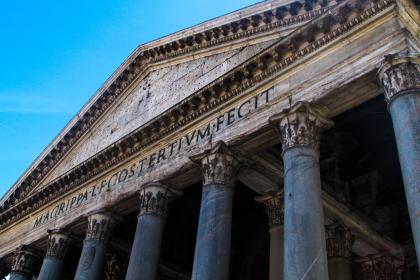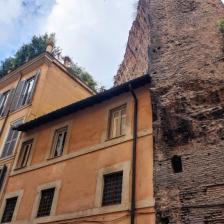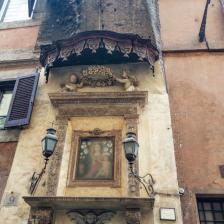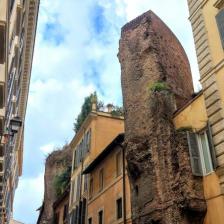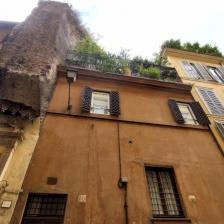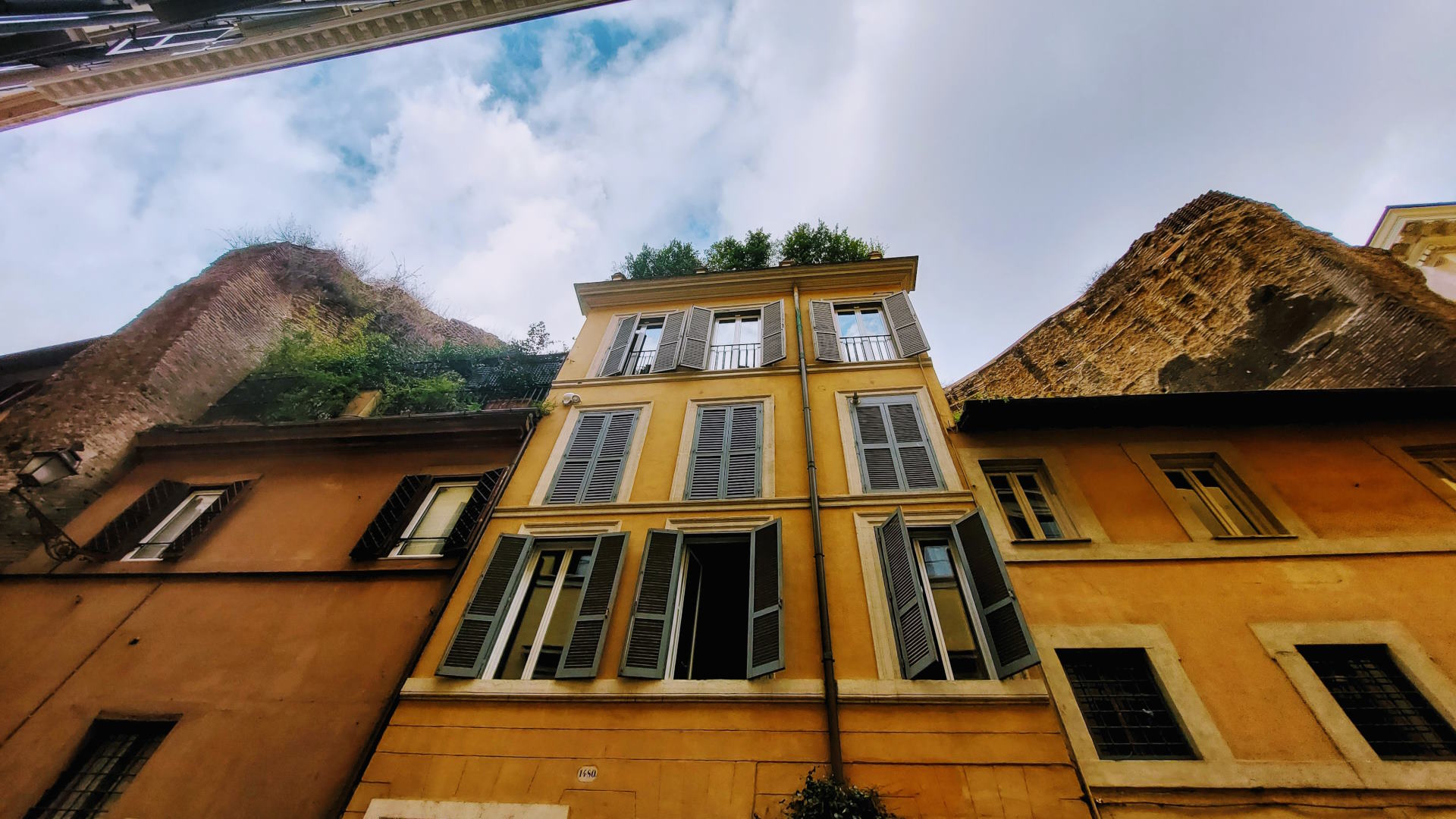
Une ville, mille histoires
La meilleure façon de connaître une ville est celle de se promener et de se perdre dans ses rues : en s'éloignant un peu des itinéraires les plus touristiques, même à Rome, on découvre un aspect inédit et « hors des sentiers battus », un mélange d'histoires fascinantes et singulières cachées dans les mille ruelles du centre historique. Les plaques de rue sont également chargées, du moins en partie, de les rappeler et de les maintenir vivantes : des noms curieux à caractère antique capables, par exemple, d'évoquer de manière inattendue la mémoire perdue des artisans et des ateliers, comme dans la Via dei Chiavari, la Via dei Falegnami ou la Via dei Coronari. Cependant, les noms de rue ne sont pas toujours faciles à déchiffrer au premier coup d'œil, comme dans le cas de la petite rue apparemment anonyme au cœur du Rione Pigna, entre le Panthéon et l'Aire Sacrée de Largo di Torre Argentina : la Via dell'Arco della Ciambella.
Les premiers thermes publics de Rome
Si le mot « ciambella » désigne un beignet italien en forme d'anneau, il n'a rien à voir avec une quelque spécialité gastronomique. Il faut remonter le temps – à l'aube de l'Empire romain, afin de comprendre la référence du nom de la rue. Entre 25 et 19 avant J.-C., le consul Marcus Vipsanius Agrippa (ami de confiance et gendre d'Auguste) fit construire un complexe thermal imposant dans cette zone du Champ de Mars, qu'il légua à sa mort au peuple romain pour un libre usage. Alimentés par l'aqueduc Vierge, les premiers thermes publics de la Rome antique étaient magnifiquement décorés de fresques, de mosaïques et de statues : c'est là, par exemple, que se trouvait le célèbre et admiré Apoxyomenos du sculpteur grec Lysippe, dont il ne reste aujourd'hui qu'une copie en marbre, réapparue au XIXe siècle au sous-sol de Trastevere, dans le vicolo dell'Atleta, et conservée dans les Musées du Vatican. Restaurés à plusieurs reprises au cours des siècles suivants et encore en fonction au Vᵉ siècle, les thermes furent démantelés à partir du VIIe siècle et leurs matériaux furent réutilisés pour de nouvelles constructions, comme il était d'usage.
Les vestiges de la « ciambella »
Reprenons le fil de notre petite rue : en levant le regard, derrière quelques maisons qui la cachent et s'y adossent, on aperçoit une imposante ruine romaine, d'une dizaine de mètres de haut. C'est à peu près tout ce qui reste des thermes, une partie de ce qui était probablement le calidarium, une salle ronde couverte d'un dôme qui, avec ses 25 mètres de diamètre, était le centre de tout le complexe. L'ouverture de la rue en 1542 a coupé le bâtiment circulaire en deux. Cependant, la salle est restée presque intacte jusqu'au début du 17ᵉ siècle, comme les gravures et les dessins de l'époque le montrent. Les habitants l'appelaient familièrement « Rotulo », « Tondo » ou « Torrione » : de là à « Ciambella », un nom témoigné depuis le début du XVIe siècle, il n'y avait qu'un pas. Les travaux d'aménagement de la zone, ordonnés par le pape Grégoire XV en 1621, se révélèrent fatals pour les anciennes ruines : une gravure du peintre hollandais Bonaventura van Overbeek, datée de 1708, montre que l'édifice et l'arc qui permettait de le traverser avaient alors été presque entièrement démolis, laissant la rue libre des obstacles à peu près telle qu'elle nous apparaît aujourd'hui.
La Madonnella miraculeuse
Les curiosités de la petite rue ne s'arrêtent pas là. Sous la « ciambella », un beau tabernacle abrite une copie de la « Madone du Rosaire » datant du XIXe siècle. L'image sacrée originale – considérée comme miraculeuse et vénérée avec d'autres Madonnelles de la ville – aurait été vue bouger les yeux et verser des larmes pendant près de 20 jours à partir du 9 juillet 1796, dans l'imminence et l'inéluctabilité de l'invasion des États pontificaux par la France. Complétée par un dais en bois, une console avec deux lampadaires et un agenouilloir, l'ancien édicule appartenait à la famille Capparucci, qui y célébrait une fête solennelle en son honneur le premier dimanche d'octobre en décorant l'image avec des branches de myrte, des lumières et des guirlandes. À la fin du XIXe siècle, lorsque la famille déménagea, ses membres emportèrent l'image avec eux et, depuis lors, on en a perdu les traces. La copie actuellement exposée dans l'édicule fut commandée quelques années plus tard par un menuisier local au peintre Pietro Campofiorito, avec la Madone tenant l'Enfant et un rosaire dans la main droite.
Tous droits de reproduction réservés
Sept rues au charme bestial
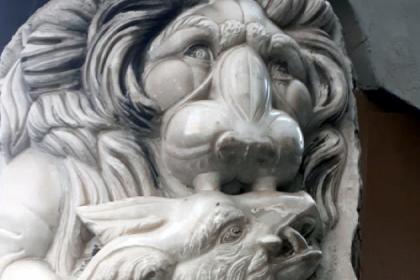
Le vie intitolate al mondo animale, un viaggio tra orsi, scimmie, leoni e,,,
L’art du surnom en sept exemples
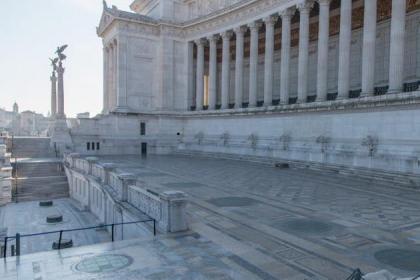
L'arte dei soprannomi: la fantasia popolare al potere
Les Madonnelles de Rome
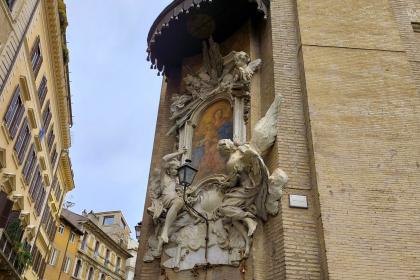
Il fascino e le storie delle tante edicole sacre dedicate alla Vergine Maria
Sept routes pour sept métiers
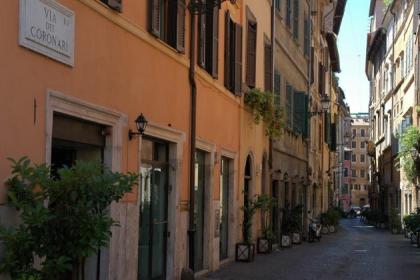
Vie e vicoli del centro storico tramandano il ricordo degli antichi mestieri della città
Aire sacrée de Largo di Torre Argentina
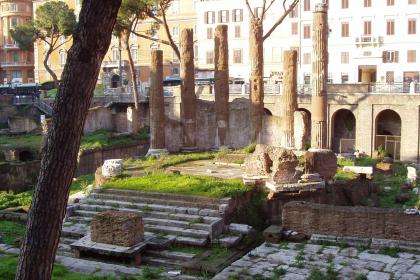
 Condividi
Condividi












































